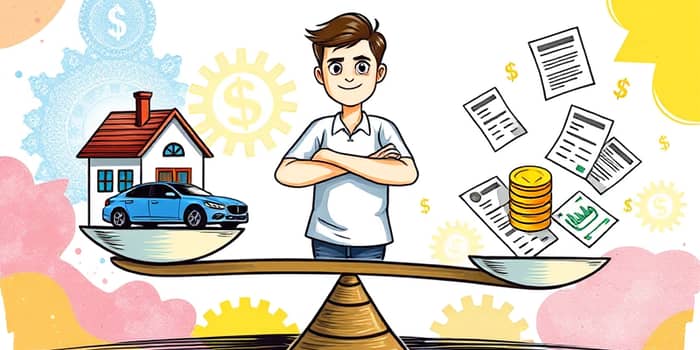
When you need extra funds, choosing the right loan can determine your financial well-being. Personal loans come in two main varieties: secured and unsecured. Though they share the same goal—providing you cash when you need it—their structures, costs, and risks differ dramatically.
Understanding these differences will help you choose the best financing option for your unique situation. This comprehensive guide explores everything from collateral requirements to approval speed, giving you the clarity to make an informed decision and take confident steps toward your financial goals.
At the heart of the secured versus unsecured debate is collateral. A secured personal loan requires you to pledge an asset—typically a car, home equity, savings account, or investment portfolio—that the lender can claim if you default. This arrangement reduces lender risk and often unlocks more favorable rates and higher loan amounts.
By contrast, an unsecured personal loan relies solely on your creditworthiness. No tangible asset backs the debt, so lenders compensate for increased risk by charging higher interest rates and imposing stricter credit requirements.
Interest rates represent the biggest cost difference. Secured loans typically offer significantly lower interest rates—often 2–5% below comparable unsecured rates—because collateral provides assurance that the lender can recover losses.
Unsecured personal loans, however, carry higher rates to offset lender exposure. As of May 2025, the average unsecured APR sits at about 20.78%, with the best credit profiles qualifying for rates near 6.49% APR. Meanwhile, well-qualified borrowers might secure a home equity loan or auto-backed loan under 10% APR, depending on market conditions.
The amount you can borrow often hinges on collateral value for secured loans. Lenders apply loan-to-value (LTV) ratios—commonly up to 80% of an asset’s appraised worth—to determine maximums. In practice, this means a $200,000 home could unlock up to $160,000 in funds, depending on the lender’s policies.
Unsecured loan limits typically top out around $100,000, influenced by credit score, income, and debt-to-income ratio. Their flexible terms allow you to use funds for almost any legal purpose—debt consolidation, medical bills, home improvements, or emergencies—without specifying a project.
Secured loan approval often involves longer processes. Lenders must appraise collateral, verify ownership, and may review insurance or title documentation. These steps can stretch the timeline from days to weeks.
Unsecured loans forego asset checks and focus on credit scores and income verification. This streamlined process can result in fast same-day or next-day funding, ideal for urgent needs. However, qualifying usually demands a FICO score of 670 or higher for competitive rates.
With secured loans, you benefit from lower rates but face the reality of potential foreclosure and repossession risks if you miss payments. Your car, home, or savings can be liquidated to settle the debt, making default a high-stakes decision.
Unsecured loans protect your physical assets, yet missed payments will trigger severe credit score damage and collection actions. While you can’t be repossessed, you may face lawsuits, wage garnishment, and long-lasting harm to your borrowing power.
Select a secured loan when you have valuable collateral and want the lowest possible borrowing costs, or if your credit score is less than ideal. Opt for an unsecured loan if you prefer to protect your valuable assets, possess strong credit, and need funds quickly.
Practical Scenario: Jane, with subprime credit, uses her paid-off car as collateral for a secured loan to consolidate high-interest debt. Meanwhile, Mark, boasting a 780 FICO score, secures an unsecured loan of $15,000 for home repairs within 24 hours.
Each lender type carries its own advantages. Banks reassure with in-person service, credit unions prioritize member welfare, and online platforms streamline applications and disbursements.
Deciding between secured and unsecured personal loans hinges on your credit health, asset availability, risk tolerance, and funding urgency. Weigh the benefits of lower rates against collateral risk, or balance speed with credit demands. Always shop around, compare multiple offers, and read the fine print to secure the best terms.
Armed with this knowledge, you can approach lenders confidently, negotiate favorable conditions, and select the loan that best aligns with your financial goals and comfort level.
References













